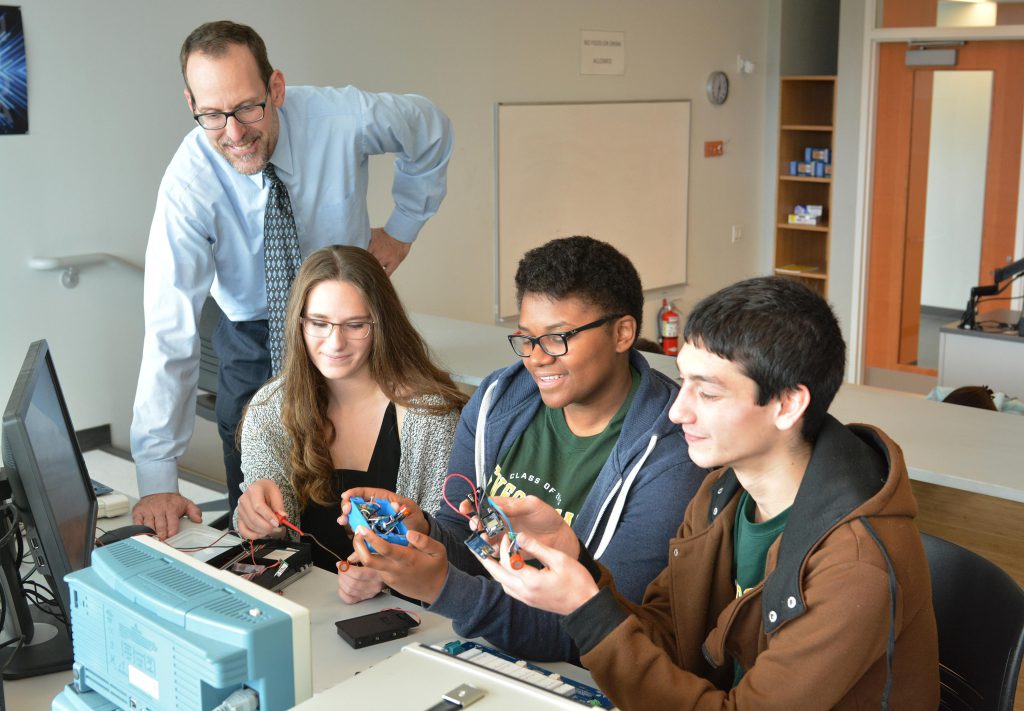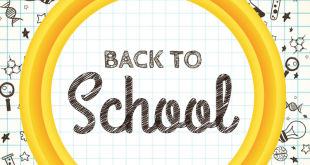Many responsibilities, duties and tasks fall under the umbrella of the process of supervision in education. When it comes to the process of supervision in education, the role of the supervisor can be quite dynamic and fluid. In this case, a supervisor can be associated with the roles of training, teaching, supervising, encouraging, developing, creating, leading, and listening; in fact, the list keeps going on. In this article, we ask the question “what is the importance of the process of supervision in education?” by discussing its types, objectives and different techniques.
Manage Your School With Skolera Best LMS!
Table of Contents
Importance of the Process of Supervision in Education
According to Merriam-Webster’s dictionary, supervision is “ the action, process, or occupation of supervising; especially: a critical watching and directing (as of activities or a course of action).”
The Essence of the Process of Supervision in Education – What is the importance of supervision in education?
Although the definition and nature of supervision could slightly differ when talking about the educational context; the essence stays the same. “Supervision is a creative and dynamic process giving friendly guidance and direction to teachers and pupils for improving themselves and the teaching-learning situation for the accomplishment of the desired goals of education.” – R.P. Bhatnagar & I.B. Verma.
It is a well-known fact that the role of supervision in education is quite significant for a variety of reasons. Let’s discuss the importance of supervision in education, its types, and objectives, as well as the common techniques of the process of supervision in education.
5 Types of Supervision in Education That You Need to Learn
“Every person under your supervision is different. They’re all different. They’re identical in most ways, but not in all ways. You have to study and analyze every individual under your supervision and try to work with them in a way that will be most productive.” ~ John Wooden, American Basketball Coach
These are the five types of supervision in education according to education experts:
- Corrective Type – The main aspect of this kind of supervision is that it locates any problems for the sake of alerting them to the authorities. That is why it is considered a negative type of supervision as it does not work towards a positive goal.
- Preventative Type – This type can be described as a forward planner in which the supervisor attempts to anticipate situations or problems to plan a system based on them.
- Creative Type – Given the name, this type of supervision is based on innovation, encouragement and experimentation. It usually takes place with the help of other peers.
- Training Type – This type of supervision is concerned with improving the supervisees through training on skills, courses or teaching techniques.
- Laissez-Faire Type – The term ‘laissez-faire’ is French for leaving things to take their own course. Lots of people agree that this is the least efficient way of supervision as there is no focus on guidance or advancement.

Objectives of Educational Supervision
The objectives of the principles of educational supervision can be listed as follows:
- Consolidation of educational effort: The purpose of supervision must be to combine and integrate the efforts of the whole staff in order to coordinate the various tools and resources that are simultaneously available in the school.
- Development of the teaching-learning dynamic: The assessment and improvement of the teaching-learning dynamic are the primary goals of supervision. The goals of supervision are to assist teachers in self-evaluating using the supervisor’s input. Students, teachers, curricular materials and information, classroom management, and the socio-physical environment are the main components of the teaching-learning process.
- Improvement of teachers’ skills: One of the objectives of educational supervision is improving teachers’ skills. The work, ideology, and approach of the teachers form the basis of the planning for supervision. One of the main goals of supervision is to improve teachers’ abilities to work together in order to efficiently complete the majority of the school’s work, which requires them to learn how to collaborate in groups.
- Integration of different educational trends: The current school procedures need to be changed to reflect changes in current educational theory and practice in order to improve the way instructions are delivered and understood. The supervisor has a duty to assist the educational staff in staying up to date with educational trends, researching and learning new pedagogical approaches, and implementing these approaches in the classroom.
- Encouragement of collaboration and teamwork: The process of supervision in education relies on the connection between the teachers and the supervisors. Teachers must learn to work cooperatively in order to complete the majority of schoolwork, and they can only do that if they have a good relationship with the supervisor. The improvement of positive interpersonal relationships is one of the goals of supervision. Healthy relationships between the supervisor and administrator, the instructor and administrator, and the administrators and teachers are necessary for effective and efficient supervision.
Read more: Little-Known Facts about School Administration
Request Skolera Demo Now For FREE!
Goals of Educational Supervision – 10 Reasons Why It Matters!
The supervision of people has served a variety of purposes. A few crucial duties of supervision include providing direction, developing policies, analysing teaching-learning situations, identifying problem areas, and offering solutions.
Additionally, it helps to enhance staff relationships, group dynamics, and educational outcomes. Listed below are the common goals that educational supervisors tend to work towards.
1. Improving the teaching-learning environment
With careful planning and everyone’s collaboration, supervision takes proactive measures to improve the teaching-learning environment and the level of instruction should be adjusted to meet the requirements of each student.
Regular revisions of the teaching curriculum are necessary as well; it should be life-centred, meaning it should relate to the needs and character of the learners as well as elements of their current family and community lives. The most recent research and educational advancements must be communicated to the teachers to make this successful.
2. Giving direction and managing with leadership
According to Investopedia, the definition of leadership entails “the capacity of a company’s management to set and achieve challenging goals, take fast and decisive action when needed, outperform the competition, and inspire others to perform at the highest level they can.”
Without strong leadership, the group’s activities and cohesion are both at risk. Harmony within the group must be fostered for the success of the group. Therefore, one of the most vital duties of supervision is to establish a leadership that will sustain the group’s cohesiveness by encouraging group sentiments and group efforts.

3. Developing the goal and objectives of the school
Ensuring that teachers and supervisors collaborate to achieve the goals of the school organisation is the most pivotal component of supervision. It is essential to remember that a school’s goals are derived from societal goals and that both teachers and supervisors must collaborate to set the goals for the teaching-learning process.
4. Enhancing relationships
Establishing and preserving friendly interpersonal relationships with and among all of the educational staff is one of the fundamental duties of supervision. A friendly connection cannot be established by merely assembling a group of individuals; rather, it must be fostered by living and working with the employees in a way that allows them to exercise strong interpersonal skills. A manager is responsible for treating his/her employees as fellow employees – and not as merely subordinates.
5. Encouraging group communication and collaboration
Education is a shared, team endeavour. A key responsibility of supervision is to foster and sustain employee cooperation, which goes hand in hand with teamwork. Working in groups promotes moral and ethical principles, democratic behaviours, and individual growth.
Additionally, it enables each group member to give their all in the effort made to accomplish the intended results. For effective group interaction, it is crucial that members are aware of one other’s tasks, weaknesses and strengths.
This might interest you: Skolera’s Webinar: How to Be a School SUPERvisor?
6. Working towards developing the outcome of education
Initiating and carrying out the process of supervision in education is done in order to achieve both general and targeted aims and objectives. Educational procedures should always lead to better educational results; so in order to enhance educational outcomes, a school primarily supports supervision and prioritises its importance.
The educational programmes’ strengths and flaws should be regularly acknowledged by the supervisor, along with any areas that could use development. It should also develop measures to address flaws as they arise.

7. Bettering supervision itself
It could seem unusual that the process of supervision in education might work for its own improvement, but if we consider that the supervisor sets his/her own goals and employs his/her own strategies; they are able to regularly evaluate whether or not and how well they perform the tasks assigned to them.
This entails a self-evaluation of the outcomes or results, adjustments to their approach and processes, as well as advancements in the supervisory staff. Thus, the focus of the school’s supervision is on the need for teachers and supervisors to work toward achieving “self-direction, self-evaluation, self-guidance, and self-supervision.”
8. Enhancing teachers’ morale
Understanding the value of confidence and morale in teaching-learning circumstances and coming up with strategies to boost them is crucial for a supervisor. A goal-achieving mindset is referred to as ‘morale.’ Morale is seen as a psychological state of mind that arises as a result of how an individual views his current accomplishments and advancement.
A demotivated teacher causes considerable harm to his kids because of his continual criticism of authorities, policies, and programmes as well as his avoidance of accountability. Ensuring that the teachers’ psychological frameworks are healthy and in line with organisational goals is one of the supervisor’s key responsibilities.
9. Encouraging motivation and interaction
A school system can only hope to support students’ learning in the proper direction with a highly motivated teacher. Therefore, it is expected that a key result of supervision will be the improvement of teachers’ and supervisors’ motivation to work together to advance educational objectives.
10. Applying problem-solving to supervision
Another function of the process of supervision in education is to assist people in solving problems. For educational instruction to produce the intended results, there must be a continuous process of examination. In situations where supervision makes interventions to assist, it necessitates the ability to problem-solve with regard to the specification of goals and rearranging the conditions for accomplishing goals.
Role Of An Administrator In A School: What Makes Them Special?
Request FREE Demo Now!
Techniques of Supervision in Education You Probably Know Already
Effective supervision techniques should primarily focus on achieving the goals and objectives of both the school and the head principal. These techniques can be in the form of:
-
Class visits
One of the most common techniques of supervision in education is the class visit to the teacher. A class visit is when the department or head supervisor decides to spend some time in a teacher’s classroom. Often the purpose of this is to provide the teacher with some feedback, suggest instructions and ask questions.
-
Observation
This is achieved by observing the teaching and learning processes such as the difficulties faced by the teachers, students’ issues, etc. Supervisors tend to observe the teacher’s teaching technique, students’ class engagement and reactions and the teacher’s use of different media for the explanation.
-
Individual conversation
Usually, this conversation happens between the supervisor and the teacher to discuss any issues the teacher might have before or after the lesson is carried out.
-
Self-assessment
This technique falls under the umbrella of teacher professional development. This can be a great way for teachers to learn self-evaluation and reflection when it comes to their teaching abilities.
-
Group teacher meetings
Group teacher meetings are basically large meetings carried out by the supervisor to inform, instruct, train and provide feedback to teachers collectively. This can take place in the form of discussions and workshops at any time during the academic year.
As Douglas MacArthur, American Military Leader puts it, “A true leader has the confidence to stand alone, the courage to make tough decisions, and the compassion to listen to the needs of others. He does not set out to be a leader, but becomes one by the equality of his actions and the integrity of his intent.”
International & Language School Management – Real Users Success Stories Webinar
In order to create the best possible teaching-learning climate, the process of supervision in education unites all these components into a productive and cohesive whole. It turns into a crucial tool for raising educational standards and ensuring quality. Finally, it may be said that Educational Supervision is a timeless idea that has undergone various iterations throughout history.
The fundamental aim of the process of supervision in education has, however, always been the establishment of instructional programmes. The various theoretical components of supervision that have been covered up to this point clearly illustrate the fundamental characteristics of supervision that are currently practised all over the world.
Modern educational supervision has a progressive outlook. And because of its collaborative and thorough nature, it includes all parties involved in the operation of educational institutions. These include parents, instructors, administrators, and students – making it a vital part of the body of education.
Sources:
https://mmhapu.ac.in/doc/eContent/Education/MdOwais/Oct2020/EDUCATIONAL%20SUPERVISION.pdf
https://www.economicsdiscussion.net/management/supervision-meaning/31921
https://www.theclassroom.com/facts-5705886-types-educational-
supervision.html https://www.mitra.edukasiku.com/2020/07/educational-supervision-techniques.html
 Skolera LMS Blog Educational Technology Articles and News
Skolera LMS Blog Educational Technology Articles and News




